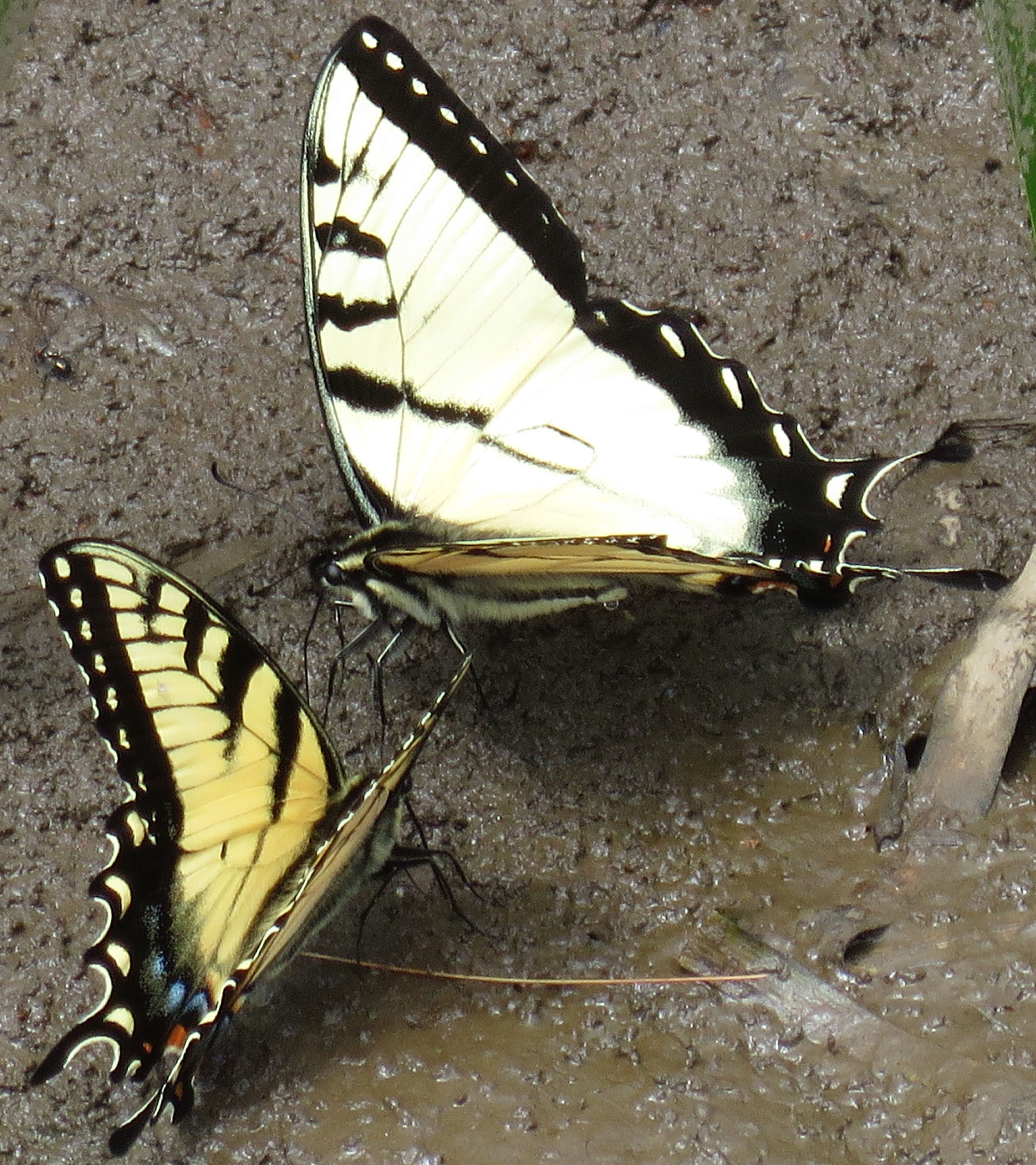|
| Common Name | Appalachian Tiger Swallowtail by Ted Wilcox => 05/16/05 - Ashe County, NC - male
[View PDF]
 Click to enlarge Click to enlarge
[Google Images] GBIF [Global Distribution ] BoA [Images ] iNaturalist |
| Scientific Name | Pterourus appalachiensis
|
| Link to BAMONA species account. |
| Map | Click on a county for list of all database records for the species in that county.
 |
| Distribution | DISTRIBUTION: Appalachian Mountains, from PA to GA. Ranges over all of the NC Mountains, at nearly all elevations. Documented for the first time in SC in April 2010 (photo by Doug Allen in Greenville County). Also occurs in South Mountains State Park (Burke County), in the upper Piedmont.
|
| Abundance | ABUNDANCE: Locally common to very common in the southern half of the Mountains, but much less common (uncommon to fairly common at best) in the northern Mountains; presumed rare in the Piedmont foothill ranges. Often outnumbers Eastern Tiger Swallowtail, at least at certain periods in its brood.
|
| Flight | FLIGHT PERIOD: A single spring flight. Adults normally begin emergence in late April, but there are now a modest number of records prior to late April (owing to warm early spring weather). The emergence is perhaps a month after the Eastern Tiger at the same elevation. They fly well into June, and a few remain into July. Flight is completed once the main summer flight of the Eastern Tiger Swallowtail begins.
|
| Habitat | HABITAT: Rich deciduous woodlands, frequently in the same habitats as Eastern Tiger Swallowtail. Best found along roads and trails through rich woods, especially at puddles and wet spots on dirt roads.
|
|
| | Plants | FOOD AND NECTAR PLANTS: The food plant is mainly or solely is Black Cherry (Prunus serotina), though other trees are presumably used. Males typically are seen gathering minerals and moisture from wet areas along dirt roads, where they can be compared with males of Eastern Tiger Swallowtail (at lower and mid-elevations). Nectar sources are varied.
|
| Comments | COMMENTS: This taxon was described in 2002 by Harry Pavulaan (who assisted with this species account) and David Wright in The Taxonomic Report. They have worked with raising various stages of the life cycle and have determined that the Appalachian is distinct from Eastern. Recent studies by Krushnamegh Kunte et al. (2011) have determined that this species evolved long ago from the interbreeding of Eastern Tiger and Canadian Tiger (P. canadensis) swallowtails. A new species -- Appalachian Tiger -- was formed with viable offspring that then has evolved on its own; interestingly, the Appalachian is much larger than either of its two original parent species! It now rarely reproduces with its parental species and is considered a good species today (i.e., it isn't proper to say that an individual Appalachian Tiger is a "hybrid", rather, its species evolved as a hybrid between two other species).
Phenotypic differences between the two species are slight. Appalachians are considerably larger than the first brood of Eastern Tiger Swallowtail; the latter species, however, has larger individuals in later broods. I have noted this size difference at puddles in May, where there are clearly large individuals (Appalachian) and "small" ones (Eastern), seemingly about 20% difference in overall size. The second important difference is that Appalachians have a yellow submarginal band on the underside fore wing, whereas the Easterns have a row of yellow crescents. Third, Appalachians have a straight, aligned black-yellow separation on the upper side of the wings, and the yellow on the hind wings extends in a deep "V"; in the Eastern, the yellow on the hind wing is more rounded (near the tail) with a convex boundary with the black border. Fourth, Eastern hind wings have a more "rounded" appearance, whereas Appalachians have more "angular", elongated and triangular hind wings. Fifth, the upper side hind wing of the female Appalachians contain very little blue, whereas the female Easterns contain considerable blue within the black of the hind wing. The black form of the female is seemingly quite rare, and it wasn't even known for several years after the species was first described. Ron Gatrelle indicates that female Appalachians are elusive, seldom seen and are much more wary than female Easterns.
|
State Rank | S4 | | State Status | |
Global Rank | G4 | | Federal Status | |
| Synonym | Papilio appalachiensis
|
| Other Name |
|
|
|

 >>
>>

